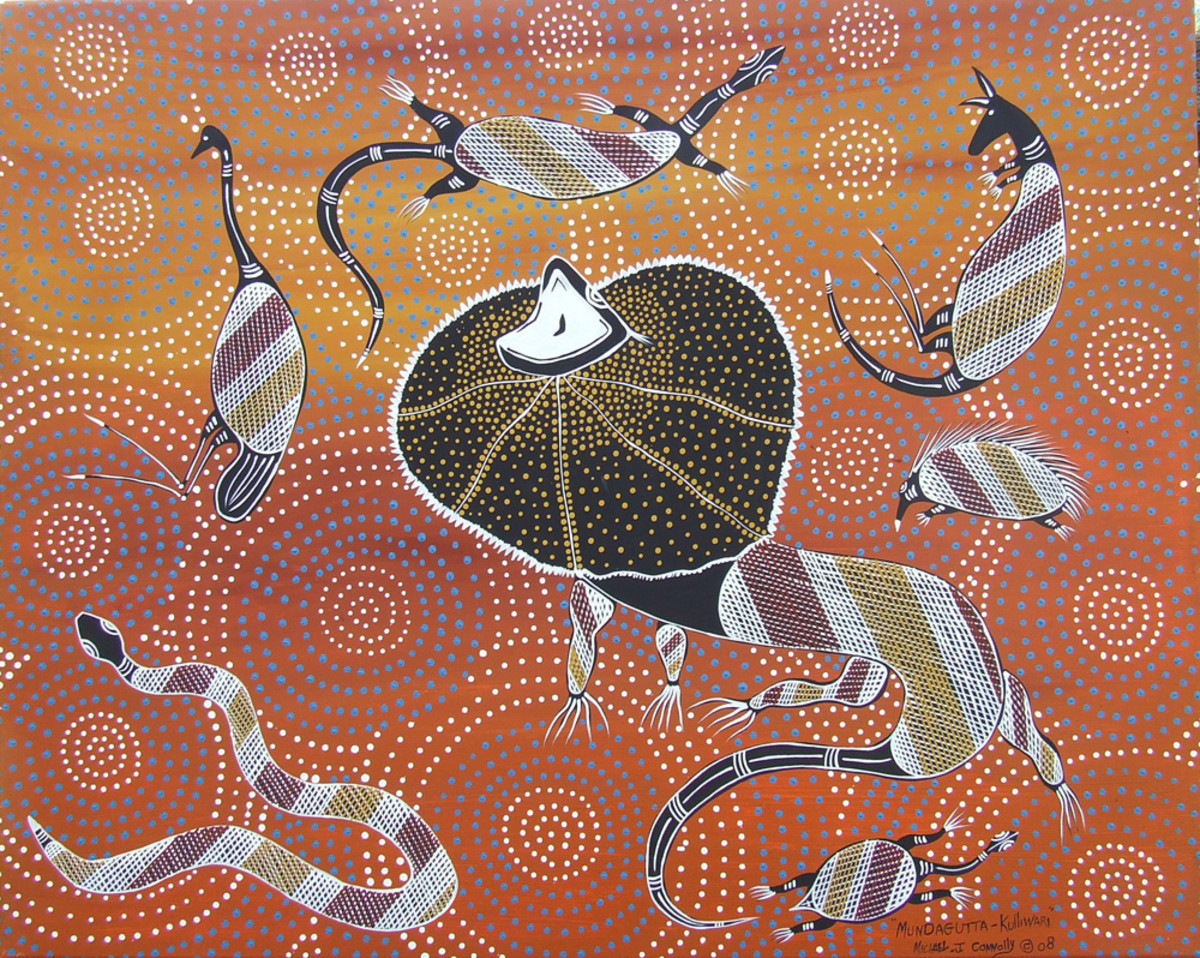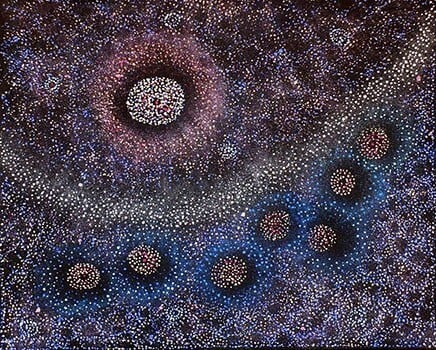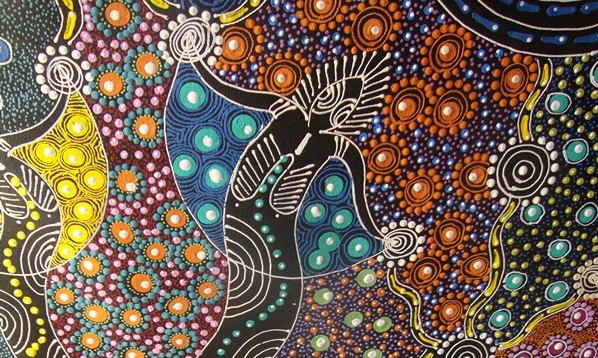Dreamtime: A Journey into the Heart of Aboriginal Australia
Dreamtime: A Journey into the Heart of Aboriginal Australia

The concept of Dreamtime, also known as "The Dreaming," is a profound and multifaceted aspect of Aboriginal Australian culture. It transcends a mere historical narrative; it’s a living, breathing entity that permeates every facet of Aboriginal life, from their understanding of the universe to their daily practices. This article delves into the intricate tapestry of Dreamtime, exploring its meaning, significance, and its enduring impact on Aboriginal culture.
A Timeless Narrative:
Related Articles: Dreamtime: A Journey into the Heart of Aboriginal Australia
- Unveiling The Power Of Storytelling: Exploring Aboriginal Culture On YouTube
- Unmasking The Monsters: Exploring Aboriginal Symbols Of The Supernatural
- A Bounty Of Oil: Exploring The Oleaginous Fruit Gems Of Australia
- Beyond The Flesh: Why Ritual Totem Images Outshine The Real Animal
- Weaving Worlds: Unraveling The Tapestry Of Indigenous Australian Storytelling
Dreamtime is not a singular event but rather a continuous, ongoing creation story that encompasses the origins of the universe, the land, and all living beings. It’s a time when ancestral beings, known as "Ancestral Spirits," roamed the land, shaping its features, establishing laws, and bringing forth life. Through their actions, they created the landscape, the flora and fauna, and even the social structures of Aboriginal society.
The Creation of the Land:
Dreamtime narratives are deeply connected to the land itself. Each region possesses its own unique Dreamtime stories, often featuring specific ancestral beings who are associated with that particular area. These stories explain the formation of mountains, rivers, valleys, and even the presence of certain plants and animals. For example, the Uluru rock formation in the Northern Territory is believed to have been formed by a giant ancestral being who emerged from the earth.
The Significance of Ancestral Beings:
Ancestral beings are not merely mythical figures; they are revered as powerful entities who continue to influence the present. They are believed to reside within the land, and their presence is felt through the natural world. Aboriginal people maintain a deep connection to these beings through rituals, ceremonies, and storytelling. These practices serve to honor the ancestors, uphold their laws, and ensure the continuity of their legacy.
The Laws of the Land:
Dreamtime stories also convey the social and moral codes of Aboriginal society. These laws, known as "The Law," are deeply ingrained in the fabric of Aboriginal culture and are passed down through generations. They dictate everything from kinship relationships and marriage practices to land ownership and environmental responsibility. The Law is considered sacred and is enforced through the social consequences of breaking it.
The Importance of Storytelling:

Storytelling is an integral part of Dreamtime. Through oral traditions, stories are passed down from generation to generation, ensuring the preservation of knowledge and cultural continuity. These stories are not merely entertainment; they are a powerful tool for education, spiritual growth, and cultural transmission. They teach about the origins of the world, the responsibilities of individuals within the community, and the importance of respecting the land and its inhabitants.
The Enduring Legacy of Dreamtime:
Dreamtime is not a static concept; it is a dynamic and ever-evolving force that continues to shape Aboriginal life today. It informs their relationship with the land, their social structures, their spiritual beliefs, and their artistic expressions. Dreamtime art, dance, music, and ceremonies are all expressions of this profound connection to the past, present, and future.
Dreamtime: A Window into Aboriginal Culture:
Understanding Dreamtime provides a crucial window into the rich and complex tapestry of Aboriginal culture. It reveals a worldview that is deeply connected to the natural world, emphasizes the importance of community, and values the transmission of knowledge through storytelling and ritual. By appreciating the significance of Dreamtime, we gain a deeper understanding of the Aboriginal people, their history, and their enduring connection to the land.

FAQ:
1. What is Dreamtime?
Dreamtime, also known as "The Dreaming," is a concept in Aboriginal Australian culture that encompasses the creation of the universe, the land, and all living beings. It’s a continuous story of ancestral beings who shaped the landscape and established the laws of society.
2. How does Dreamtime relate to the land?
Dreamtime stories are intimately connected to the land. Each region has its own unique narratives, often featuring specific ancestral beings associated with that area. These stories explain the formation of geographical features and the presence of certain plants and animals.

3. What are Ancestral Beings?
Ancestral beings are powerful entities in Aboriginal belief who are responsible for creating the world and establishing the laws of society. They are believed to reside within the land and continue to influence the present.
4. What are the "Laws of the Land"?
The "Laws of the Land," derived from Dreamtime stories, are the social and moral codes of Aboriginal society. They dictate kinship relationships, marriage practices, land ownership, and environmental responsibility.
5. How is Dreamtime transmitted through generations?
Dreamtime stories are passed down through oral traditions, ensuring the preservation of knowledge and cultural continuity. Storytelling is a vital tool for education, spiritual growth, and cultural transmission.
6. What is the significance of Dreamtime today?
Dreamtime remains a powerful force in Aboriginal life. It informs their relationship with the land, their social structures, their spiritual beliefs, and their artistic expressions.
7. How can I learn more about Dreamtime?
You can learn more about Dreamtime by visiting Aboriginal cultural centers, museums, and art galleries. You can also read books and articles about Aboriginal culture and history.
8. Is it appropriate to refer to Dreamtime as "mythology"?
While Dreamtime stories might be considered myths by some, it’s important to understand that they are not mere fables. They are a fundamental part of Aboriginal belief and have profound spiritual and cultural significance.
9. How can I show respect for Dreamtime?
Showing respect for Dreamtime involves understanding and appreciating its significance in Aboriginal culture. This means listening to Aboriginal stories, learning about their beliefs, and respecting their traditions and practices.
10. What is the importance of understanding Dreamtime?
Understanding Dreamtime provides a crucial window into the rich and complex tapestry of Aboriginal culture. It reveals a worldview that is deeply connected to the natural world, emphasizes the importance of community, and values the transmission of knowledge through storytelling and ritual.

Closure
Thus, we hope this article has provided valuable insights into Dreamtime: A Journey into the Heart of Aboriginal Australia. We appreciate your attention to our article. See you in our next article!


